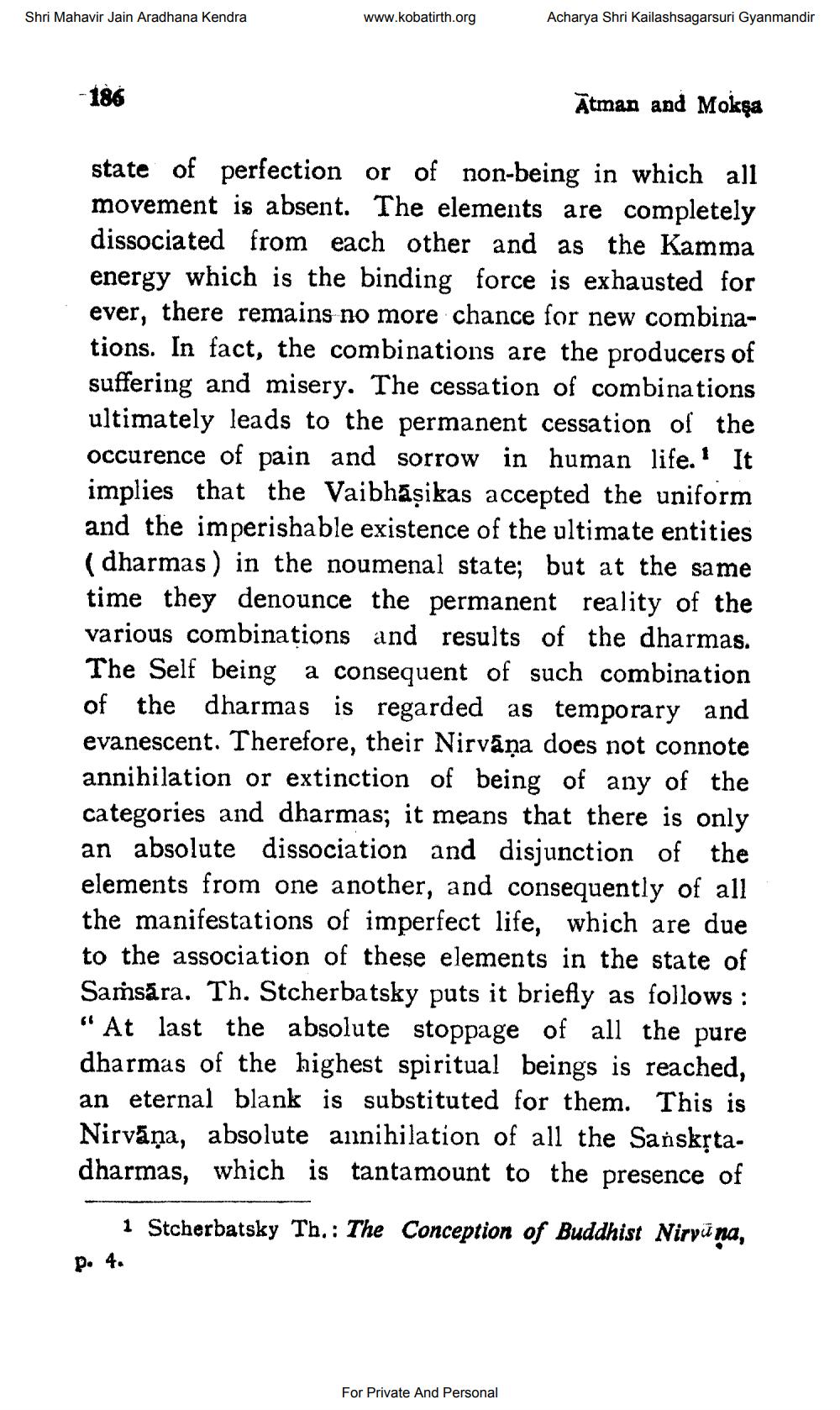________________
Shri Mahavir Jain Aradhana Kendra
-186
www.kobatirth.org
Atman and Mokşa
state of perfection or of non-being in which all movement is absent. The elements are completely dissociated from each other and as the Kamma energy which is the binding force is exhausted for ever, there remains no more chance for new combinations. In fact, the combinations are the producers of suffering and misery. The cessation of combinations ultimately leads to the permanent cessation of the occurence of pain and sorrow in human life. It implies that the Vaibhaṣikas accepted the uniform and the imperishable existence of the ultimate entities (dharmas) in the noumenal state; but at the same time they denounce the permanent reality of the various combinations and results of the dharmas. The Self being a consequent of such combination of the dharmas is regarded as temporary and evanescent. Therefore, their Nirvāņa does not connote annihilation or extinction of being of any of the categories and dharmas; it means that there is only an absolute dissociation and disjunction of the elements from one another, and consequently of all the manifestations of imperfect life, which are due to the association of these elements in the state of Samsara. Th. Stcherbatsky puts it briefly as follows: "At last the absolute stoppage of all the pure dharmas of the highest spiritual beings is reached, an eternal blank is substituted for them. This is Nirvana, absolute annihilation of all the Sanskṛtadharmas, which is tantamount to the presence of
Acharya Shri Kailashsagarsuri Gyanmandir
1 Stcherbatsky Th.: The Conception of Buddhist Nirvana,
p. 4.
For Private And Personal




